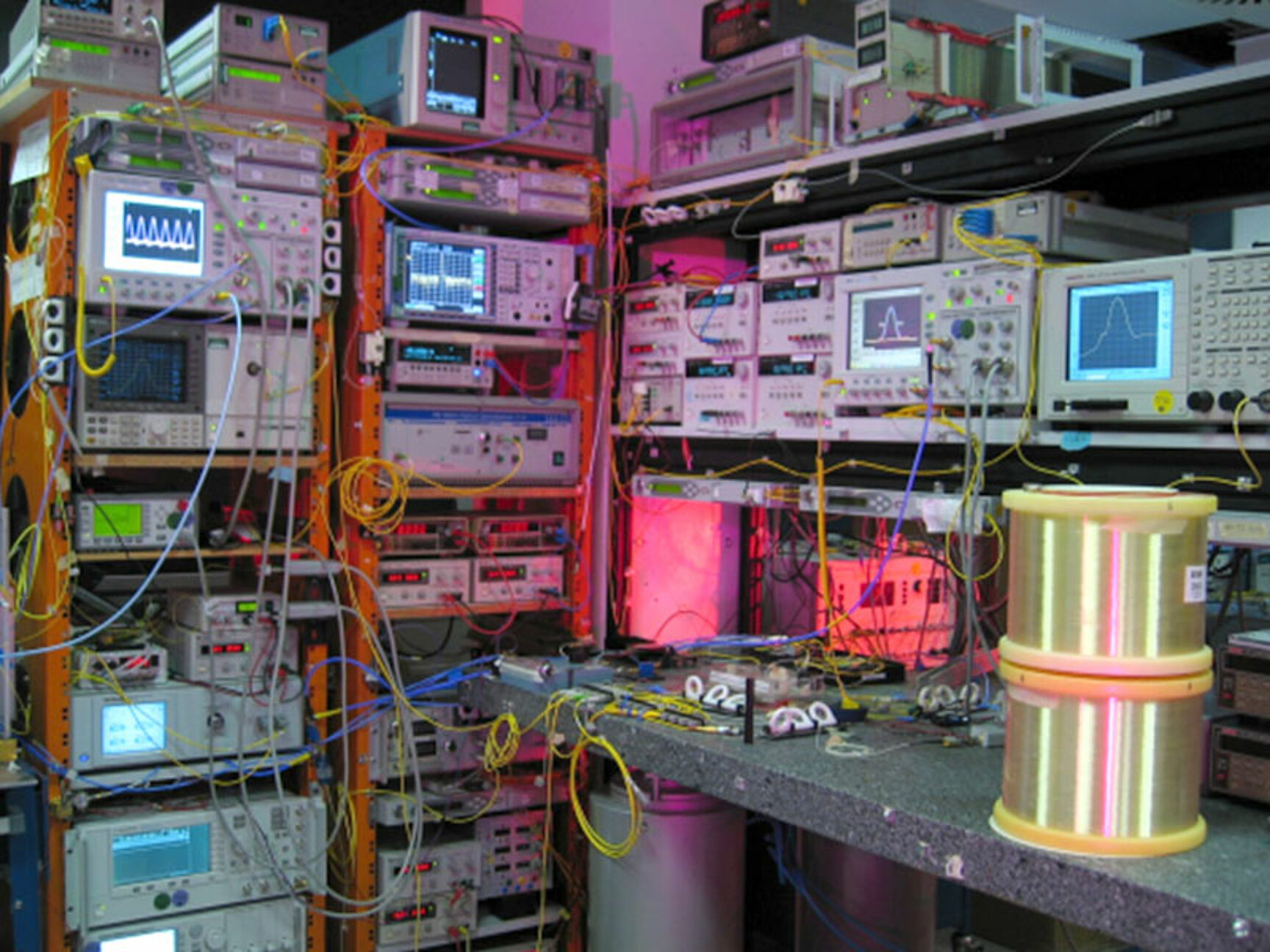
Optical Time Division Multiplexing (OTDM)
High-speed data transmission systems and related signal processing and monitoring technologies for data rates above 100 Gbit/s up to several Tb/s are important building blocks for future generation optical networks.
A flexible technology to generate such high data rates is Time Division Multiplexing (TDM). As current electronics is limited in speed, Optical Time Division Multiplexing (OTDM) is used to overcome this limitation in the laboratory, taking advantage of short pulse generation in the optical domain. Different data signals with a low data rate of e.g. 40 Gbit/s and a short pulse width of a few picoseconds, are bitwise interleaved in the time domain to create a high-bitrate signal of e.g. 160 Gbit/s up to the Terabit/s regime. In contrast to wavelength division multiplexing (WDM), only one wavelength ("color") of light is used.
Features Measurement Types
- Testing of components for receiver and transmitter based on OTDM (multiplexer, demultiplexer, Clock Recovery)
- Long-term stable fiber transmission systems using different state-of-the-art modulation formats (e.g. ASK, DPSK, DQPSK, BPSK, 8-QAM, 16-QAM, PS-QPSK)
- Optical sampling of ultra-high speed signals
- Investigation of compensation techniques (PMD, CD compensation)
- Application oriented research through industry contracts and in the frame of national and international research programs
Features of OTDM-Testbed
We run a world-leading testbed for high speed data transmission ranging from 10 Gb/s up to 10 Tb/s on a single wavelength channel and offer measurements on all related types of components and system configurations with cutting-edge measurement equipment. The equipment also covers measurement capabilities around 1.3 nm and coherent detection.
We presently hold the world record in high speed transmission after having demonstrated single-channel 10.2 Tbit/s transmission over a 29 km fiber link using 16-QAM modulation and coherent detection together with researchers from DTU Fotonik, Denmark, in 2011.